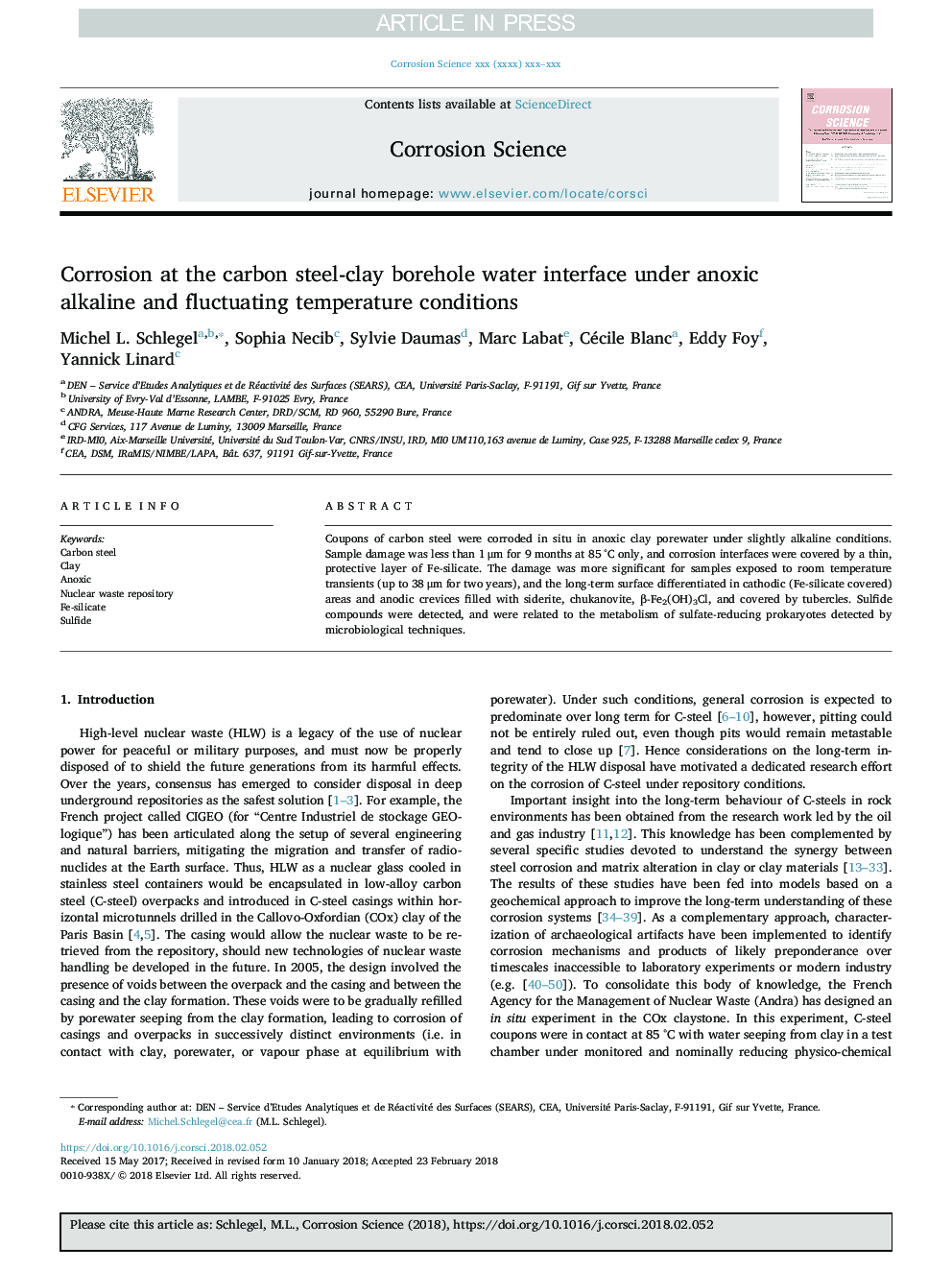| Article ID | Journal | Published Year | Pages | File Type |
|---|---|---|---|---|
| 7893559 | Corrosion Science | 2018 | 21 Pages |
Abstract
Coupons of carbon steel were corroded in situ in anoxic clay porewater under slightly alkaline conditions. Sample damage was less than 1â¯Î¼m for 9 months at 85â¯Â°C only, and corrosion interfaces were covered by a thin, protective layer of Fe-silicate. The damage was more significant for samples exposed to room temperature transients (up to 38â¯Î¼m for two years), and the long-term surface differentiated in cathodic (Fe-silicate covered) areas and anodic crevices filled with siderite, chukanovite, β-Fe2(OH)3Cl, and covered by tubercles. Sulfide compounds were detected, and were related to the metabolism of sulfate-reducing prokaryotes detected by microbiological techniques.
Related Topics
Physical Sciences and Engineering
Materials Science
Ceramics and Composites
Authors
Michel L. Schlegel, Sophia Necib, Sylvie Daumas, Marc Labat, Cécile Blanc, Eddy Foy, Yannick Linard,
